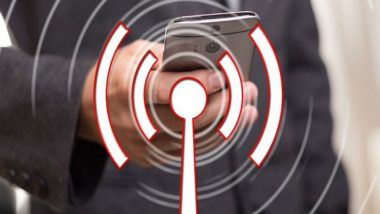Washington D.C., Aug 15: Interestingly, ordinary Wi-Fi can easily identify weapons, bombs and explosive chemicals in bags just anywhere, be it a crowded stadium, or museums, theme parks, schools and other public spaces, a new study reveals. The researchers' suspicious detection object is easy to set up, reduces secrity screening costs and avoids invading privacy such as when screeners open and inspect bags, backpacks and luggage. Traditional screening generally requires high staffing levels and costlier specialized equipment. "This could have a great impact in protecting the public from dangerous objects. There's a growing need for that now", said study author, Yingying Chen.
The study reveals that Wi-Fi, or wireless, signals in most public places can penetrate bags to get the dimensions of dangerous metal objects and detect them, including weapons, aluminium cans, laptops and batteries for bombs. Wi-Fi can also be used to estimate the volume of liquids such as water, acid, alcohol and other chemicals for explosives.
This low-cost system requires a Wi-Fi device with two to three antennas and can be integrated into existing Wi-Fi networks. The system analyzes what happens when wireless signals penetrate and bounce off objects and materials.
Experiments were done with 15 types of objects and six types of bags demonstrating detection accuracy rates of 99 percent for dangerous objects, 98 percent for metal and 95 percent for liquid. For typical backpacks, the accuracy rate exceeds 95 percent and drops to about 90 percent when objects inside bags are wrapped.
"In large public areas, it's hard to set up expensive screening infrastructure like what's in airports. Manpower is always needed to check bags and we wanted to develop a complementary method to try to reduce manpower," concluded Chen.
Next steps include trying to boost accuracy in detecting objects by imaging their shapes and estimating liquid volumes. The study was performed at Rutgers University, New Brunswick. It also received the best paper award at the 2018 IEEE Conference on Communications and Network Security on cybersecurity.













 Quickly
Quickly


